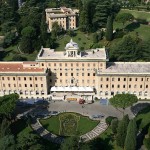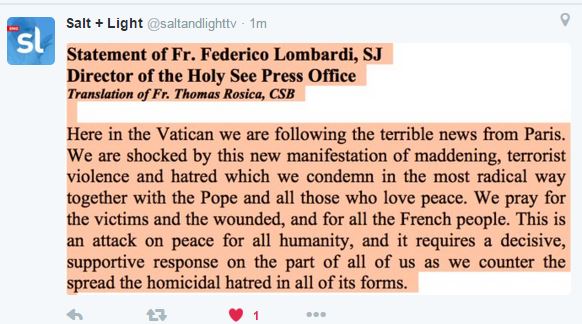
Pinturicchio’s fresco of “The Resurrection” has adorned a wall at the Vatican for 519 years—but someone just noticed that there are native Americans in the scene.

It was 1494 when the Renaissance painter completed the fresco in the Borgia Apartments, now part of the Vatican Library. Christopher Columbus had just returned from discovering the New World—and had reported that there were men there who danced nude, painting their bodies and wearing feathered headdresses. Since there were no photographs at the time, Renaissance painter Pinturrichio may have listened to Columbus’ vivid description of the new race of humans he had encountered in America.
John Thavis, on his excellent blog, reported the discovery:
It hasn’t drawn much attention yet, but the Vatican has quietly announced the discovery of what it believes is the first artistic representation of native Americans.
A detail of a fresco by the Renaissance artist Pinturicchio, discovered during restoration work in the Vatican Museums, depicts men dressed only in feathered headdresses who appear to be dancing, and another on horseback.
The painting was completed in 1494, shortly after Christopher Columbus returned from the New World with a detailed description of natives who painted themselves, danced and gave gifts of parrots.
For hundreds of years, the frescoed figures were hiding in plain sight – sort of. They are part of the background in a lunette fresco titled “The Resurrection,” noted for its depiction of Pope Alexander VI, the infamous Rodrigo Borgia, who was elected in 1492.
The detail was obscured by centuries of soot and grime, and came to life only recently when the fresco underwent a careful cleaning by Museum experts.
Antonio Paolucci, director of the Vatican Museums, announced the discovery in an April 27 article which appeared in the Vatican newspaper L’Osservatore Romano.
Although some news reports say that the figures came to light after recent renovation and cleaning, I looked at some file images of Pinturicchio’s work and saw that the figures were clear, at least as far back as 2007. It seems, then, that it was not so much the effects of time that hid the native Americans from view; rather, it was lack of attention to detail on the part of Vatican curators and art connoisseurs.
That’s understandable when one considers that the works in the Vatican Library are not as well known or as often visited as are the works in the Vatican Museum’s 54 galleries. Those galleries are home to the world’s largest collection of art, and are visited by more than 5 million tourists annually.











